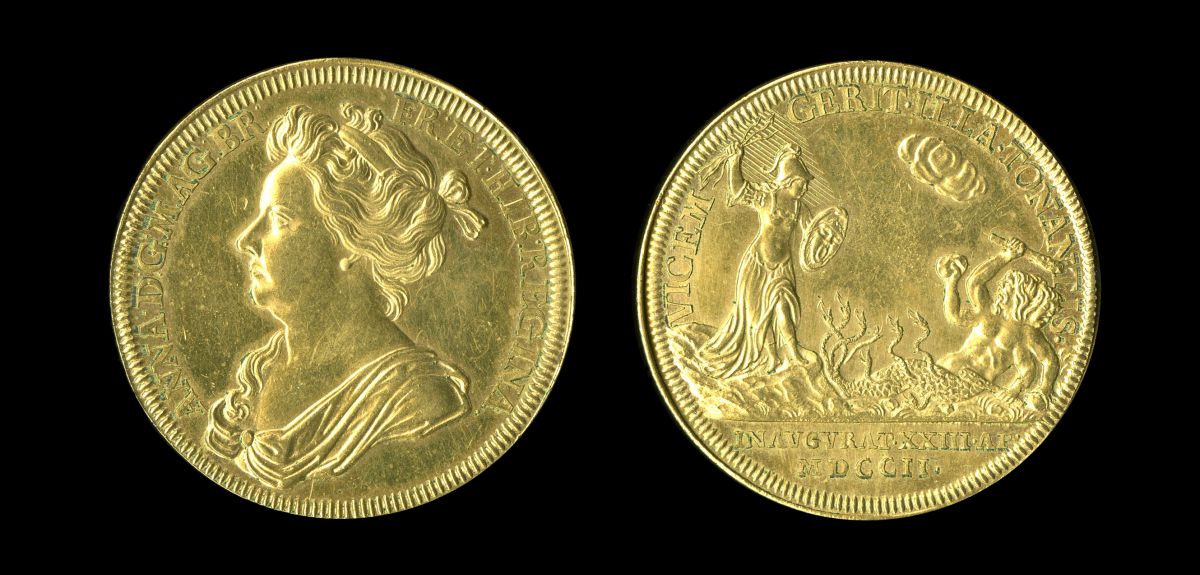The Stuart Successions Project was conceived as an interdisciplinary venture. Although the project database only catalogues texts, successions were marked by lots of other artefacts too. Some of those artefacts are unofficial objects, souvenir items such as delftware or engravings of the monarch. But others were official products. For instance, every Stuart coronation was commemorated with an officially commissioned coronation medal. These medals—actually small metallic tokens—were distributed to peers and diplomats at the ceremony, or sometimes thrown into the crowds gathered in Westminster Abbey. For most of these medals the documentation explaining the processes behind their design and manufacture has now been lost. But the paperwork for Queen Anne’s coronation medal survives.
As part of my doctoral work on Anne’s accession, I took to the National Archives at Kew with hopes of uncovering new documentary evidence for her coronation. Among a cache of Mint papers in the Archives are a set of manuscripts belonging to the Master of the Mint, Isaac Newton. And in those manuscripts, in Newton’s hand, are sketches and explanations of Anne’s coronation medal and a range of other prospective coronation medals besides. While Newton scholars had already noted this material, nobody had fully explored its significance and implications. It soon dawned on me that I had happened upon a much bigger—and much less explored—subject than I had initially expected.

Queen Anne’s coronation medal. © Trustees of the British Museum.
So what did Anne’s coronation medal look like? Well, the reverse depicts Anne as Pallas Athene, striking down a double-headed monster. Recent scholarly consensus has been that the monster is a Hydra representing domestic faction. But Newton, in his own notes on the design, describes it as a symbol of ‘any Enemy with which Her Majesty hath or may have War’. In other words, the monster presents the double threat posed by Louis XIV and James Francis Edward Stuart, the Old Pretender. The motto looks back to William and Mary. By describing Anne as a ‘Thunderer’, Newton explains that he was alluding to the coronation medal of 1689, which likewise portrayed William as a thundering Jupiter. In a sentence, Newton explains that the coronation medal ‘signifies that her Majesty continues the scene of the last reign’.
The messages of the medal were not lost at the time. Some of William’s allies used the medal to suggest that Anne was William redivivus. William’s Tory enemies, on the other hand, considered it a potentially seditious object. The High Tory Vice Chancellor of Oxford even banned students from discussing the medal in their panegyrics to the new queen! This medal, it seems, had political bite.
What are we to make of all this? For starters it shows us that it wasn’t just texts that responded to moments of royal succession with allegorical sophistication. One of the great things about the Stuart Successions Project is that it synthesizes the approaches of literature and history. So although coronation medals and other objects don’t appear in the database, we have to remember how important they could be at the time. A more detailed discussion of Anne’s coronation medal, Newton’s role in designing medals, and their broader political significance is forthcoming in Huntington Library Quarterly.
Joseph Hone